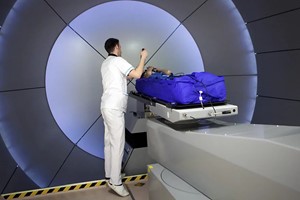Artificial intelligence (AI) could help reduce unexpected deaths in hospitals by identifying patients at high risk of deteriorating health, according to a recent study published in the Canadian Medical Association Journal (CMAJ). The study highlights how an AI-based early warning system called CHARTWatch successfully reduced mortality by flagging at-risk patients, allowing healthcare teams to intervene more quickly.
Unexpected health declines often lead to emergency ICU admissions, especially if patients worsen without early intervention. Past studies have tried using technology to identify these high-risk cases, with mixed results. However, this new research, conducted by Unity Health Toronto, ICES, and the University of Toronto, shows promise for AI-based early warning systems in clinical care.
CHARTWatch was developed over three years at St. Michael’s Hospital in Toronto to identify high-risk patients on the hospital’s general internal medicine (GIM) ward. The AI system analyzes patient data and sends alerts to help clinicians prioritize patients needing urgent care, potentially preventing critical health declines and unplanned ICU admissions.
Researchers studied CHARTWatch's effectiveness by analyzing data from 13,649 patients aged 55–80. This included a pre-intervention group of 9,626 patients treated without CHARTWatch, an intervention group of 4,023 patients with CHARTWatch active, and a control group of 8,470 patients in specialty units that did not use CHARTWatch.
In the 19-month intervention period, CHARTWatch flagged 482 patients as high-risk, compared to 1,656 classified as high-risk during the 43-month pre-intervention period. Despite the shorter intervention timeframe, this reduction suggests CHARTWatch’s efficiency in identifying and supporting critical cases earlier. Additionally, the study observed fewer non-palliative deaths in the CHARTWatch group, with a mortality rate of 1.6% compared to 2.1% in the pre-intervention group.
“As AI tools are increasingly being used in medicine, it is important that they are evaluated carefully to ensure that they are safe and effective. Our findings suggest that AI-based early warning systems are promising for reducing unexpected deaths in hospitals,” said Dr. Amol Verma, a lead researcher on the study. His comments underscore the importance of thoroughly assessing AI tools to ensure their effectiveness in real settings.
CHARTWatch’s success was bolstered by robust communication strategies. The system issued real-time alerts to clinicians, twice-daily email updates to nursing teams, and daily emails to the palliative care team. Additionally, the hospital created a specialized care pathway for high-risk patients that included increased nurse monitoring, enhanced nurse-doctor communication, and prompts for physicians to frequently reassess patient care.
“Ultimately, this study shows how AI systems can support nurses and doctors in providing high-quality care,” Dr. Verma added. By streamlining detection and improving communication among healthcare providers, CHARTWatch helped clinicians intervene early, creating a more proactive approach to patient care.
Dr. Muhammad Mamdani, coauthor and vice president of data science at Unity Health Toronto, emphasized the significance of these findings: “This important study evaluates the outcomes associated with the complex deployment of the entire AI solution, which is critical to understanding the real-world impacts of this promising technology.” He noted that Unity Health Toronto is working with other institutions to share CHARTWatch via partnerships, aiming to expand these benefits to more hospitals.
This study marks a promising shift in healthcare, where AI is used as a proactive tool to improve patient outcomes. CHARTWatch and similar systems could set a new standard for monitoring and early intervention in hospitals, improving patient safety and outcomes across Canada and potentially beyond.
The researchers hope that AI systems like CHARTWatch will be refined and implemented in other healthcare settings, helping to reduce mortality rates by giving clinicians actionable insights for earlier intervention. With healthcare growing increasingly data-driven, AI’s ability to enhance patient care and save lives is becoming more attainable.










